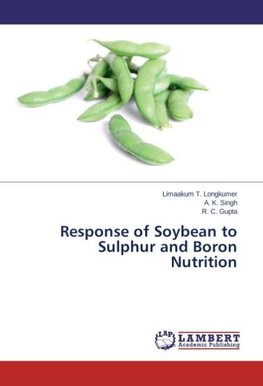
-
 Anglický jazyk
Anglický jazyk
Response of Soybean to Sulphur and Boron Nutrition
Autor: Limaakum T. Longkumer
In India, soybean (Glycine max) has established one of the major oilseed crops besides being pulse crop. In the North East India, it is grown on slopes, jhum lands, terraces and plains. In spite of high yield potential, it productivity is much less than... Viac o knihe
Na objednávku, dodanie 2-4 týždne
36.17 €
bežná cena: 41.10 €
O knihe
In India, soybean (Glycine max) has established one of the major oilseed crops besides being pulse crop. In the North East India, it is grown on slopes, jhum lands, terraces and plains. In spite of high yield potential, it productivity is much less than the world average. Cultivation of soybean on marginal land combined with sub optimal nutrients supply is the major hurdle in realising potential productivity. Sulphur is required for the synthesis of sulphur-containing amino-acids cystine, cystein and methionine which are essential components of protein. Soybean is very sensitive to boron deficiency as well. It requires an adequate supply of boron, especially during flowering and seed development. Its deficiency may cause restriction of water absorption, carbohydrate metabolism and even sterility. Recently the importance of boron has also been recognized in the development of embryo and synthesis of protein. Boron deficiency is known to inhibit economic yield. Soybean cultivation on acidic soils of northeast India is on rise but both of these vital nutrients are widely deficient in the region due to extreme acidity, excessive rainfall and very low use of mineral fertilizers.
- Vydavateľstvo: LAP LAMBERT Academic Publishing
- Rok vydania: 2013
- Formát: Paperback
- Rozmer: 220 x 150 mm
- Jazyk: Anglický jazyk
- ISBN: 9783659508509

 Nemecký jazyk
Nemecký jazyk 









